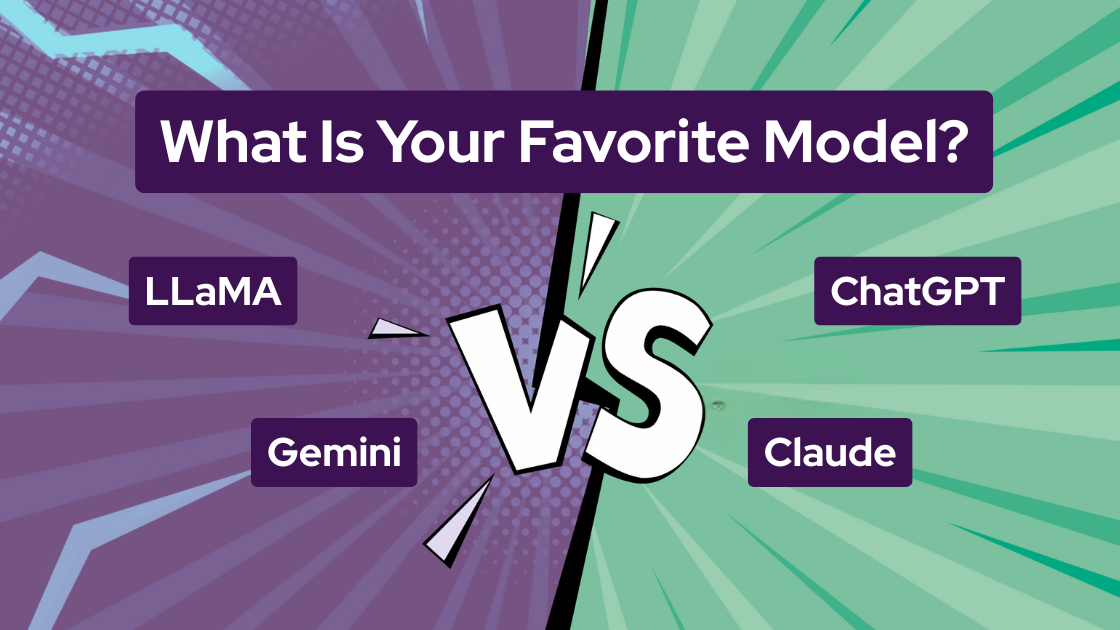As many of you already know, we don’t train our own language models for Betty to run on. Instead,...
Or, Why Speed Sometimes Beats Intelligence...
I was in a conversation recently about how fast AI is moving and got what’s really a pretty standard question: What is your favorite model? Most of the time, this is actually about chat tools – ChatGPT, Gemini, Claude, etc. – but I always want to give the deeper answer about the foundations behind all that software instead.
So, what is my favorite model? Well, it depends. (by the time you read this, my answer might have changed anyway so hopefully that’s not too disappointing of an answer)
The Usual Trade-Offs: Cost, Intelligence, Speed
If you ask me how I pick my “favorite” language model, it comes down to three main factors:
- Cost: What’s it going to cost me (or my company) to run this model?
- Intelligence: How “smart” is it, really?
- Speed: How fast do I get my results?
Like anything, there are trade-offs. Higher intelligence models cost more. Faster and cheaper models might not be as smart. But even that “AI triangle” thinking doesn’t tell the whole story.
Fast and Cheap Go Hand in Hand (Usually)
- Smaller, less intelligent models are generally faster – and cheaper.
- AI is moving so quickly that costs keep dropping, even for top models, so unless you’re running something huge all day every day, you’re probably not racking up huge bills.
So, most of the time, I’m really weighing just two things: intelligence and speed.
Speed: The Underrated Superpower
Speed is the easy one to explain. This is just: how quickly do I get a response? Smaller models are faster. There are exceptions if you’re running things on your laptop versus a beefy cloud setup, but generally, that’s how it works.
And honestly, people underestimate how important speed is. If you’re waiting forever for a reply, you stop caring how “smart” the answer is. Conversational tools need to be… well, conversational, which means they have to be fast enough to keep up the back-and-forth.
Intelligence: It's Not Just About Knowing Stuff
Now, intelligence is trickier. I don’t really care if language models know random facts. For me, “intelligence” means:
- How well does it follow (sometimes messy) instructions?
- Can it use tools or APIs to get up-to-date info when needed?
- How much context can it handle before it gets confused?
- Can it stay on track, even if you throw a wall of text at it?
A lot of people get hung up on hallucinations (making stuff up) as a measure of intelligence. But if a model can use tools to check facts or stick to the info I provide, I’m happy. If it’s got a giant, recent training set but can’t follow my directions, I don’t care how many facts it knows.
This is where the latest models (think GPT-4.1 and o series, Gemini 2.5, Claude 4, etc.) are really shining: following complex instructions and handling big, messy contexts.
So, Should You Just Pick the Fastest "Smart Enough" Model?
You might be thinking, “Okay, so just figure out what’s ‘smart enough’ and then grab the fastest model that clears that bar?” That’s not a bad starting point, but it’s a little more nuanced.
Here’s why:
- Small models are way better than they used to be. Today’s small, fast models outperform the biggest models from a year or two ago.
- You can “fake” intelligence with speed. If a model is really fast, you can break a big task into smaller steps, string them together, and still have a snappy experience. Tools do this behind the scenes all the time.
- But sometimes, you just want magic. The best models still feel kind of magical. You can hand them a huge pile of information and a vague request, and they just… do it. That’s hard to replicate by stitching together lots of fast-but-small model runs, and it can be a pain to build systems that manage all those steps.
How I Actually Use Models (Spoiler: It Changes All the Time)
So, yes, my favorite model depends on what I’m doing. Here’s a quick cheat sheet of my current go-tos:
- Coding or large context interactions: Lately, Gemini 2.5 Pro has been amazing, but, between writing this as a draft and publishing, Claude 4 entered the world, so...
- Tricky research or logic puzzles: I fall back on the GPT o series (o3 and o4 mini) with reasoning (and just accept it’ll take a bit longer).
- This is also where I go to help me take a long, rambling narrative about model intelligence vs. speed and make it more organized and reader friendly, since it can handle the nuance of maintaining my voice more effectively in the process.
- Fast content or brainstorming: I love Groq (a hosting platform with amazing hardware for running language models) with the LLaMA models – unreal speeds, perfect for riffing on ideas or tasks that need a ton of text.
But really? Most models are “good enough” for most tasks now. If you’re after some niche advantage, you can probably find it, but it’ll be temporary. The landscape changes every week.
The Real Answer: “It Depends”
So, what’s my favorite language model? It depends. (you knew that was coming)
If you care about the best possible results and don’t mind waiting, the biggest models are still providing a wild experience. If you want to move fast, smaller models (or smarter tools that use them in clever ways) are good enough for a lot of things and even better for some.
And if you ask me again in a month, my answer will probably have changed. That’s just how it goes in this world, now.
.png?width=173&height=70&name=Betty_RGB%201%20(1).png)



